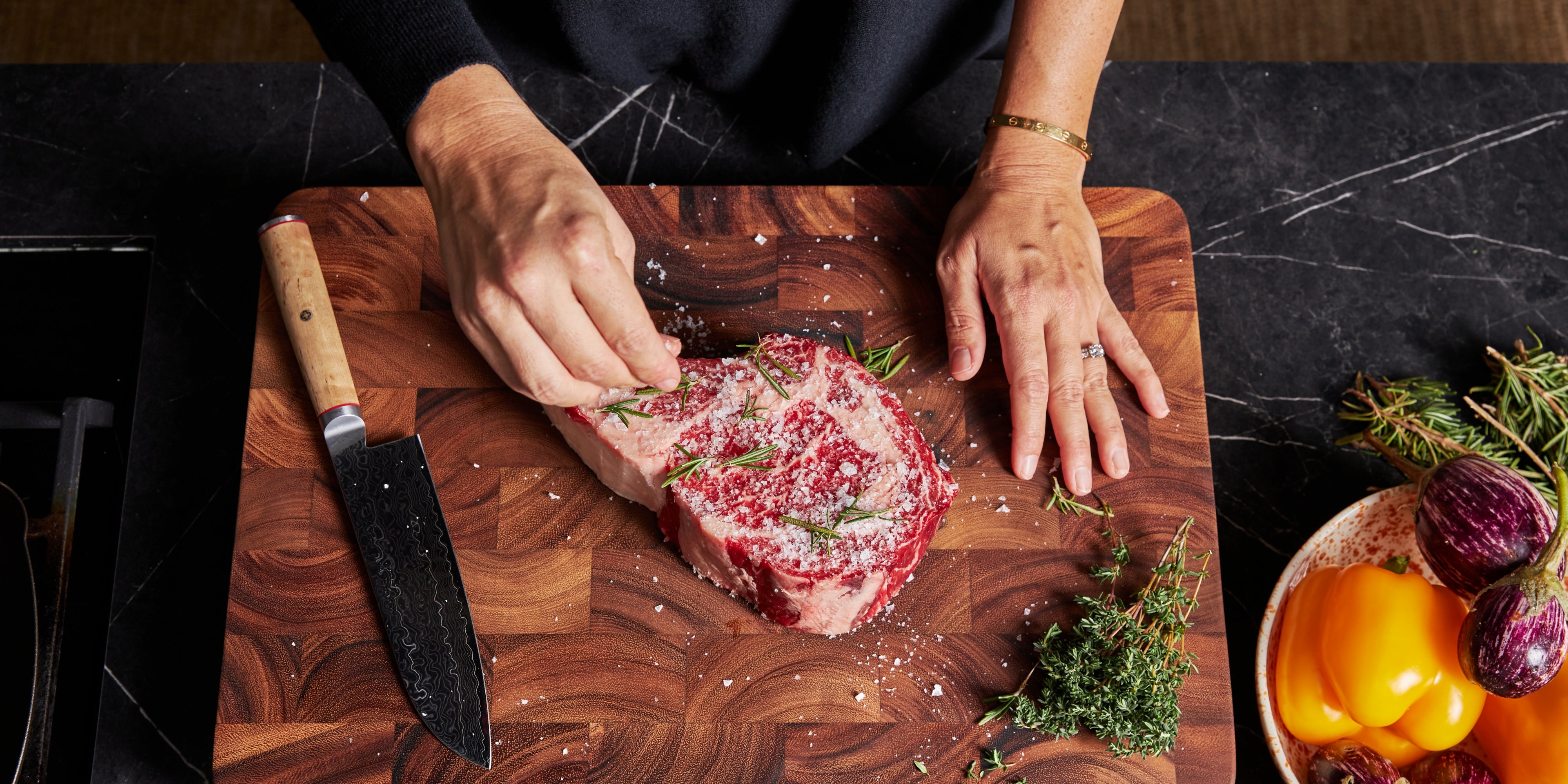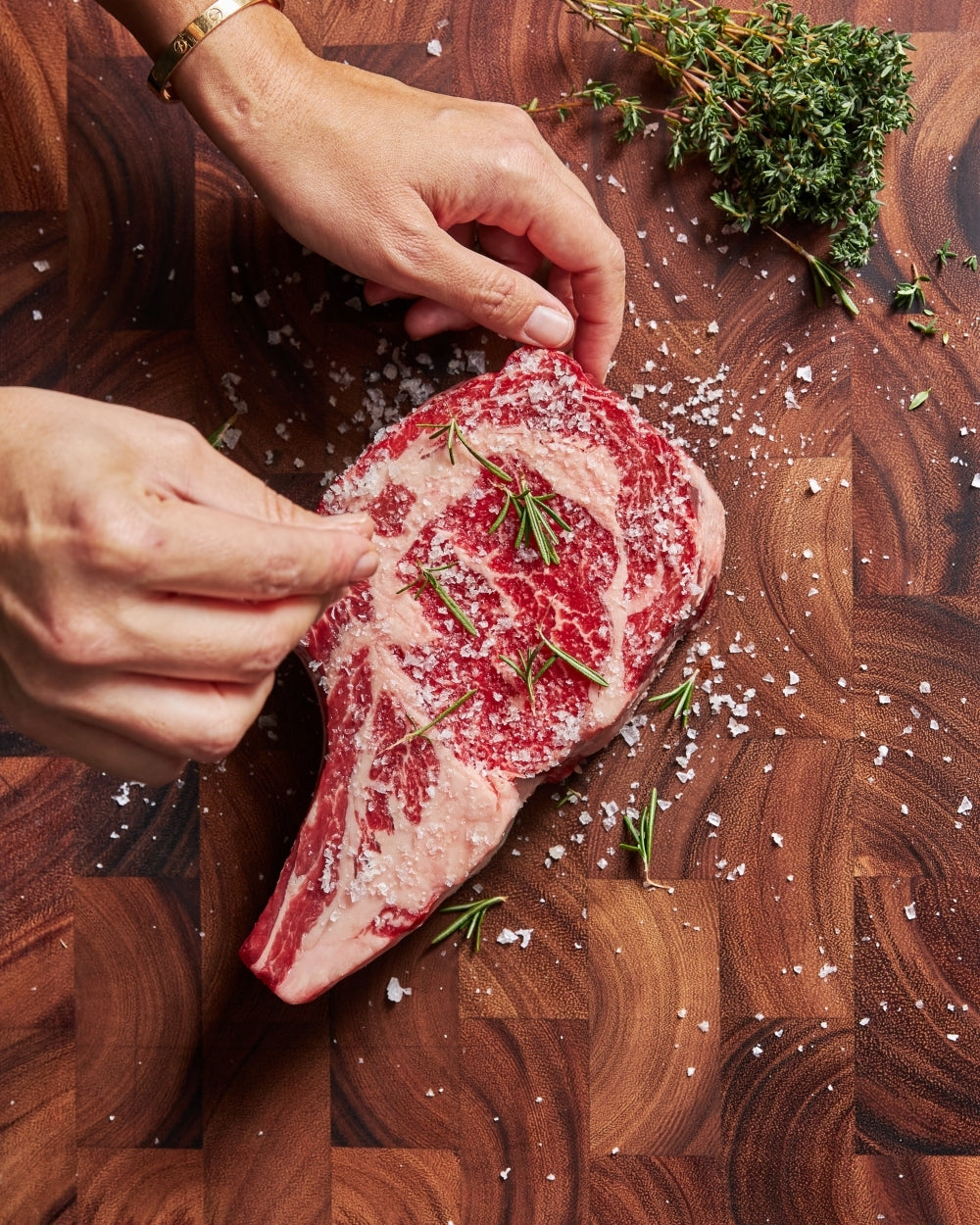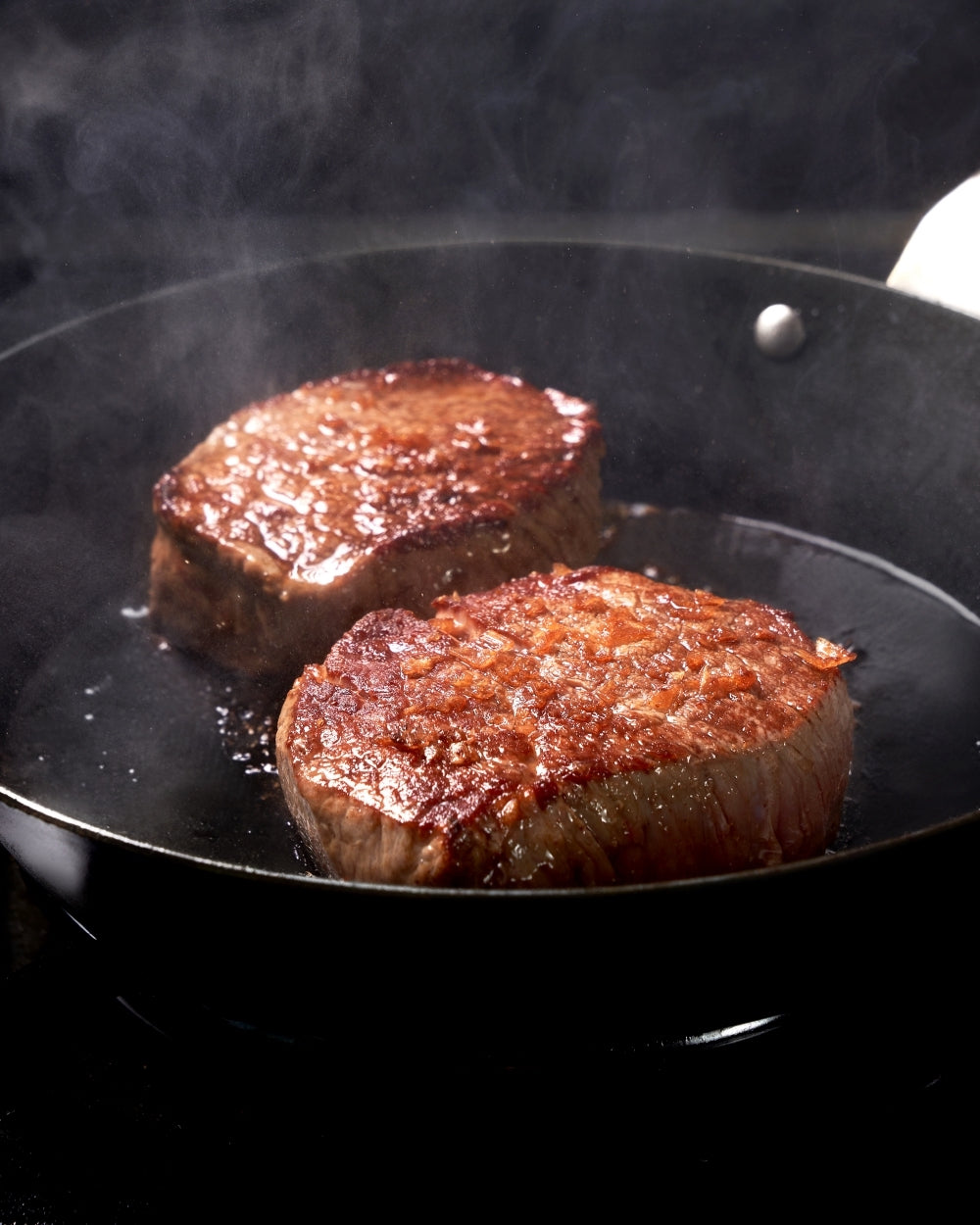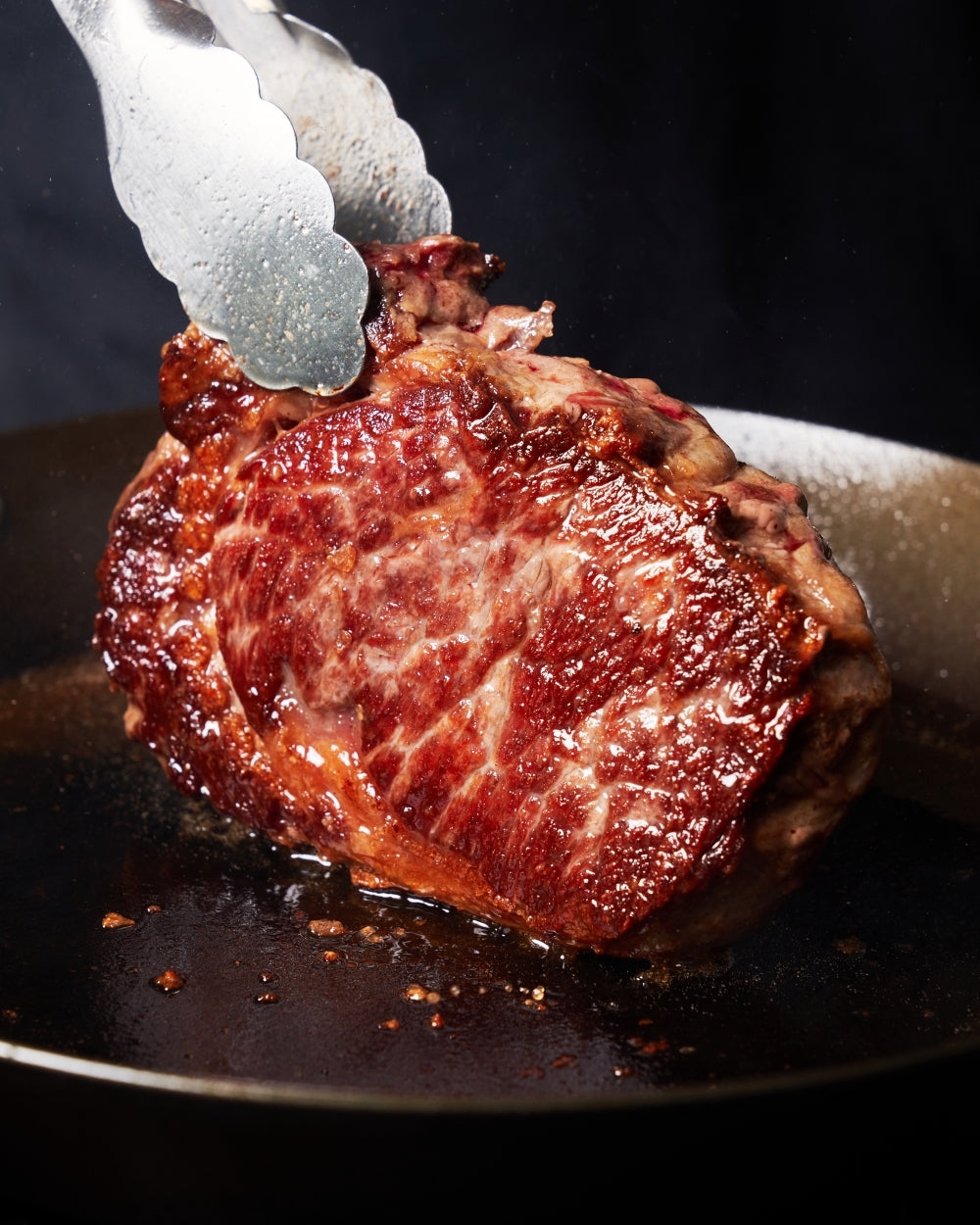
So you want to buy the best steak? Just follow our guide.
We love steak. How much? So much. Let’s count the ways. Eye fillet steak. Sirloin steak. Rib-eye. T-bone. Tomahawk. Rump steak. How many is that? We lost count. Basically we’re down with all steak cuts, whether super-lean or ridiculously marbled with yummy fat. From cooking it over campfire, finishing in the oven, classical poaching (yep, that’s a thing), or grilling over coals, there are a few ways to cook a great piece of beef. But before you enjoy the best steak ever, there are things to know. Many things. Because a meh steak is just. so. sad.

The best steak starts with… a great steak
How to tell a great steak? First off, look at the colour – it should be deep red (too pale means it might not be aged enough). A brownish shade is nothing to worry over as this just means it’s been exposed to oxygen. That’s OK. Unless the surface is tacky and starts to smell weird, the colour change is nothing to worry about.
How to buy the best steak
The surface of steak should not be overly wet as this could signal it’s been frozen. If you’re buying steak packaged on trays, steer clear if there’s liquid pooling in the base of the tray. Pre-cut steaks should be of an even thickness (so they cook evenly) and the edges should be neat, not raggedy. To touch, steak should feel nicely firm and not flabby or soft. Avoid steak with overly yellow or browning fat, or with clumps of fat throughout the flesh. You want good, even marbling, which melts during cooking and keeps things juicy. Some cuts do have a seam of fat throughout and this is simply a characteristic.

What’s the deal with aged steak?
Excellent question! All beef is aged, which refers to the amount of time meat is stored between processing and ending up on your plate. Aging helps develop flavour; very fresh beef doesn’t actually taste that great (it’s a bit metallic) and is more likely to be tough. During aging, enzymes work their magic to give the flesh a richer, beefier, rounder flavour and they also start breaking down connective tissues, making meat more tender.
Wet versus dry aging
There are two types of aging; wet (which happens in vacuum packaging in the meaty juices) and dry. Dry aging is where larger cuts of fattier, bone-in meat are hung in a temperature and humidity-controlled environment with plenty of air circulation. It hangs for anywhere between a few weeks to several months. It’s an expensive process, not just because of the time and space it requires, but because the meat loses up to 30 per cent of its moisture content, which not only concentrates flavour but causes significant shrinkage.
Aficionados swear by the extreme tenderness and incredibly beefy, complex flavours of dry-aged steak, although it’s costly to buy. Wet-aged meat has a deep burgundy colour and might smell a bit strong when you first take it out of its packaging.

Which is better: grass-fed or grain-fed?
‘Grass-fed' is often used as a selling point for beef, but fans will say grain-fed tastes better and is dependably tenderer. Cows naturally eat grass, not grains, so for some folks there are ethical questions around using grain as a feed. Australian beef is overwhelmingly grass-fed (about 95 per cent), with some cattle ‘finished’ on grain (mainly barley and wheat) for the last weeks of their lives to give the meat some grain-fed characteristics. Or, they’re given grain to supplement their feed when the pasture is a bit sparse.
More grass V grain pros and cons
Grain-fed beef is more fat-marbled, has a smoother flavour and more buttery texture than grass-fed, which has yellower fat, tends to be leaner, and has an overall stronger, ‘beefier’ taste. Grass feeding is subject to seasonal and environmental variations so you get a wider range of flavours and textures in the meat.
In summary?
The best steak looks different to different people, so find what works best for you, your taste and your budget.
